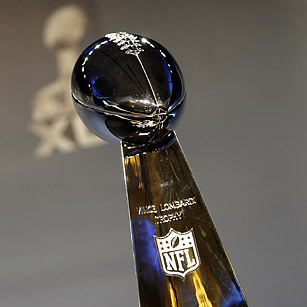Lessons from the DHL / Airborne Express Merger Failure.
"Turnaround management" gets thrown around a lot and like most B-school buzzwords it has lost some of its meanings. What does it take to turnaround an organization? In my experience in multiple industries, companies, and environments (union, non-union, and independent contractors) it can mean a lot of things and can take even more...
#1 It's never as quick or as easy as it looks on an excel spreadsheet.
Consultants get a lot of bonus points for "Work Product" a fancy term for analysis, and recommendations. The problem is unless they are the ones that can sell it to the team who has to carry the plan out its completely worthless. When DHL Express purchased Airborne Express, they had some amazing consultants telling them how it would work best. Years later it's a soon to be written Harvard business case study of one of the worst merger integrations in history. The result of the amazing "work product" was the loss of 9,500 jobs and a total pull out of the American domestic market. The trucks you see today are independent contractors with DHL logos delivering 50-75% less than Airborne Express was delivering pre-acquisition...
#2 Culture eats strategy for breakfast, lunch, dinner, and 2nd dinner if it's still hungry.
Exaggerated for effect but the point needs to be made...
No matter how amazing the plan looks in PowerPoint.
No matter how many degrees you have.
No matter how much capital you have planned and budgeted.
If you don't have the right team, you might as well throw all of that in the garbage. Until the day, we can program robots to do everything you have to work with people. People are irrational, emotional, mistake prone, and easily distracted (they have a lot of good sides too). They don't follow direction unless they understand and believe in the "Why." Simon Sinek wrote a great book titled "It Starts with WHY." However, most-great leaders in time didn't read that book (it wasn't out yet) and for them it was very common sense, but it's not common sense for bad leaders.
"Buy In" is everything for everyone and if you are trying to turn something around, and you know the plan is strong but you can't get people to buy in you have one choice to make, and that's to get rid of the people who are not on board. It sounds harsh, but you are doing a service to everyone. If they don't buy into the plan or the mission than all they are doing is infecting the organization. Terrell Owens was one of the greatest Wide Receivers in football, but the organizations could not get him to buy into the "team" philosophy so he had to go. Many would argue he left the NFL 2 to 4 years before his talent did, which is very sad...
#3 Most well thought out plans don't last past first contact with the enemy!
As a former Marine I always relate military strategy, business strategy and leadership principles. Its in my DNA and has served me well on many occasions. What I mean by first contact is that most plans no matter how well thought out will never think of everything. In fact, DHL and Airborne Express had many opportunities to adjust to new information. The failure they ultimately had was a lack of leadership, period. In times when there are conditions that present new facts to the leader it is important that you take those into consideration and make decisions. Waiting for more information can lead to "analysis paralysis" and in a very dynamic business environment the result could equal death or in a more civilian tone, failure. Five-year strategic plans are ridiculous unless you have a CEO by the name Nostradamus. Although, even his foresight was a little suspect. Keep the strategic planning to 12-18 month increments and meet often to review new data so you can adjust. A plan should always be written in pencil not ink...
#4 Trust your gut no matter how big or small the waistline of experience.
A great leader deals with facts, changing competitive winds, lack of complete information, and of course drama. They must often use their gut intuition, and that should not be underestimated. Intuition is your body using conscious and sub-conscious cues and connections trying to help you make a good decision. It has bailed many people out of tough situations, and a good leader knows when to trust his gut. In the case of the DHL / Airborne Express merger there were signs of issues with culture, independent contractor model, and leadership teams within the first 30 days. It's hard to know if the leadership had any gut feelings that the plan needed to change, but if he did he sure didn't act on it. In fact, the senior leadership chose to throttle forward vs. operating independently of each other for months and maybe a year or two to carefully integrate. Deutsche Post had the money to do it right and chose to do it fast and cheap. The first impact of that decision was the quality dropped which had a direct impact on the customer. Bad move to make when you are in the service industry...
#5 Don't be cheap, good leadership deserves a pay scale but great leadership deserves as much as it takes.
Leadership is so important, and I can't think of one example of greatness in team sports, military history, or business that succeeded with terrible leadership. I'm sure there is an outlier somewhere but even when senior leadership fails, unit leadership can save the mission. The highest paid Coaches in Sports get paid a lot more than those who have not won. Would you pay $5 Million for Pete Carroll and Lane Kiffin? Aren't they both coaches? The answer, of course, is no, you pay $5 Million for Pete Carroll, a coach who wins everywhere he has been because he is worth it. You fire Lane Kiffin... That's why when Company CEO's change and the replacement makes bad decisions the company can still survive (for awhile) on the culture and unit level leadership who fights hard to save it.
The best and worst department in any organization can be Human Resources. Beware the HR leader who wants to stick to outdated pay & benefits policies when you know the success of your organization is critical to finding the "Right" leader. They may make more than you wanted to pay, but trust me the best ones always will, and they are worth every penny. Don't allow a policy to impact the right decision especially if you are recruiting them into a turnaround situation. They are already going to have a lot of work ahead of them, fighting for fair pay and compensation packages for themselves or those teammates they are hiring should not be one of them.
Bottom Line - Turnarounds can only be achieved with strong Leadership.




